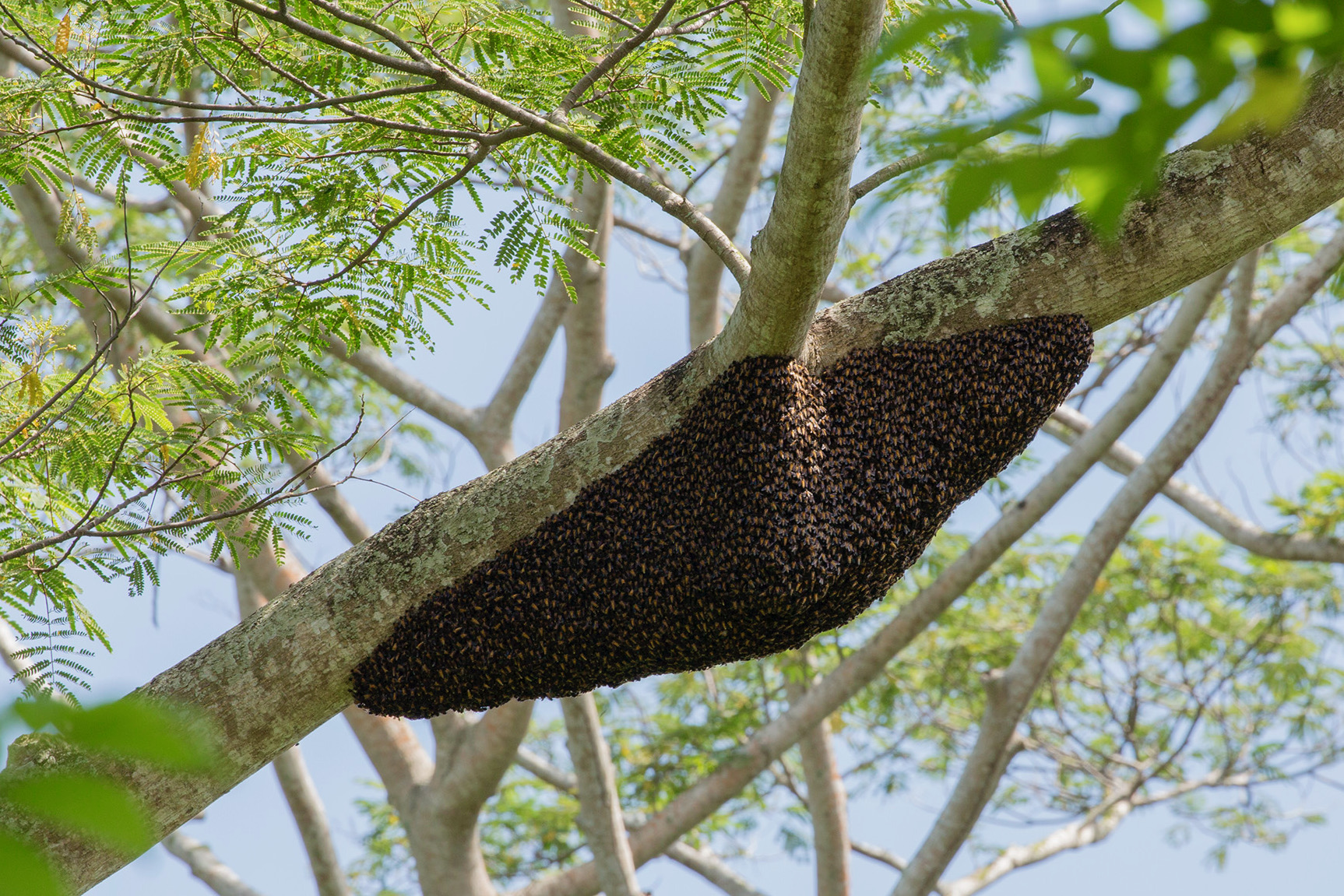BANGLADESH
The Honey Hunters
By Chadd McGlone
Chapel Hill, NC, United States
The world’s largest mangrove forest is located in southwestern Bangladesh along its border with India. Few forests remain in this area, due to agricultural development in the fertile delta. One of the last preserved tracts constitutes the Sundarbans National Park. In addition to providing a home for mangroves, the Sundarbans also serves as a habitat for many animals:
- endangered Bengal tigers
- saltwater crocodiles
- venomous snakes
- leopards
- butterflies
Speaking of insects, the giant honey bee, the world’s largest, most aggressive bee, produces its prized honey there.
In order to collect this honey, hundreds of local fishermen take a three-week break from their day jobs. In boats containing teams of 7 to 10 people, the fishermen travel the muddy saltwater creeks that crisscross the thick mangrove forest. Every moment of their journey poses a potential danger. The biggest risk comes from the Bengal tigers, which kill at least 15 people each season.
Safeguards
Practices have developed over generations to safeguard the honey gatherers. For example, before beginning their expedition, the men pray to the forest god Bonbibi for protection. The honey collectors also wear masks or loose-fitting headscarves to provide attacking tigers with a harmless place to bite. Despite their best efforts, nearly every collector has a story to tell about a tiger encounter, many of which left deep scars as mementos.
Spotting a hive high in the branches of a mangrove tree is an easy task given that they can be up to nine feet in diameter. First, team members light a fire to drive the bees away. Next, the best climber scurries up the tree to collect the honey and honeycomb. While he climbs, the remaining hunters clap their hands and blow horns to fend off any tigers that might be stalking them.

Satellite view of Sundarbans National Park. Photo credit: NASA Earth Observatory
Income
An individual honey collector will harvest about four maunds of honey (one maund is equal to 82.3 pounds) and is paid between BDT 5,800 and 6,700 (Bangladeshi taka) each year (one US dollar is worth about 119 taka).
Honey or not, that’s some pretty sweet cash!
Have a suggestion for this story? We’d love for you to submit it!


Blank
Blank
Slideshow
Are you a teacher who’s interested in telling this story to your students? Here’s a slideshow you can use to get started.
Math Resources
Learning Activity:
- Multiplication (Grade 5)
Sample Problems:
- If a family has four adults collecting honey, how much (in taka and US dollars) will this family make in a year?
- If the tigers attack 15 people each year, how many will they attack in 15 years?
- Research the average height of a mangrove tree in this area. Would it be possible to use a 10-foot ladder to reach the top? How tall would a person have to be?
- How many bees do you see in the picture of the hive? What are the upper and lower limits of your estimate? Why do you think that?
Extension Questions
Mangrove forests have been shown to sustain many other types of human activity. What are some of them? Which ones do you think are the most important to the health of the planet as a whole?
Explore Further
- UNESCO page on the Sundarbans
- World Wildlife Fund page about the Sundarbans
- Detailed story about honey harvesting
- Article about the plight of “tiger widows”
Share Your Story
Write your own Global Math Story and send it to us!
Sorry, the comment form is closed at this time.